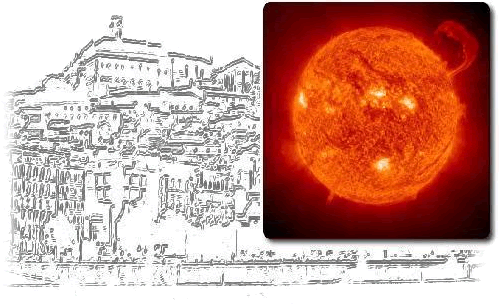|
Solar type II radio bursts are produced by plasma oscillations in the
solar corona as a result of shock waves. The relationship between type II bursts and
coronal shocks is well shown by observations since the 1960s. However, the details
of the association between the drivers of the shocks and the metric type II bursts
remains a controversial issue. The flares and the coronal mass ejections (CMEs) are
considered as potential drivers of these shocks. In this work, we present the
analysis of a metric type II burst observed on May 17, 2013, by spectrometers from
e-CALLISTO network (extended-Compound Astronomical Low-cost Low-frequency Instrument
for Spectroscopy and Transportable Observatories) and EUV images from the Extreme
Ultraviolet Imager (EUVI), aboard the Solar Terrestrial Relations Observatory
(STEREO). The event was associated with an M3.2 X-ray flare and a halo CME. The EUV
images clearly show the EUV wave was produced by the expansion of the CME. The
heights of the EUV wave fronts and the magnetic field intensity determined in the regions
of the shock are consistent with those the heights of radio source obtained with
the three-fold Newkirk density model, which provided a clue to an oblique
propagation of the shock. The finding of an accelerating shock with speed of
530-640 km/s and of 870-1220 km/s for the first and the second stages of the type
II emission, respectively, is consistent with both the average speed of the
associated EUV wave front, of 626 km/s, during the initial expansion of the CME,
and with the linear speed of the CME, of 1345 km/s. These results will be presented
and discussed.
|



